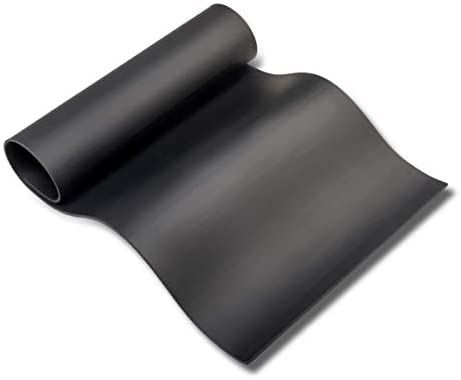When it comes to soundproofing spaces, the Mass Loaded Vinyl Sound Barrier is often the go-to solution for homeowners, contractors, and architects alike. Its dense yet flexible composition makes it ideal for reducing noise transmission across different spaces. However, improper installation can hinder its effectiveness. In this blog, we delve into the most common installation issues and offer practical solutions to ensure you get the most out of this powerful soundproofing material.
Understan the Basics of a Mass Loaded Vinyl Sound Barrier
Before we dive into troubleshooting, let’s recap what a Mass Loaded Vinyl Sound Barrier is and why it’s so effective. This product is a high-density, flexible material often used in residential, commercial, and industrial settings to reduce noise. Its unique properties allow it to act as a sound blocker and dampener, making it one of the most versatile soundproofing materials available.
Key benefits of using Mass Loaded Vinyl Sound Barrier include:
- Excellent noise reduction capabilities.
- Easy to install on various surfaces.
- Durable and resistant to environmental factors.
- It can be installed with other acoustic solutions also.
However, like any building material, its effectiveness depends largely on proper installation. Let’s explore how to address common pitfalls during the installation process.
1. Uneven Surface Installation
Problem:
One of the most common issues is attempting to install the Mass Loaded Vinyl Sound Barrier on an uneven surface. This can create air gaps that compromise its ability to block sound transmission
Solution:
- Prepare the Surface: Surface should be clean, dry, and smooth. Patch any cracks or holes before installation.
- Use Backer Boards: For highly uneven walls, consider installing a backer board to create a uniform surface before applying the MLV Sound Barrier.
- Secure with Adhesives or Screws: Use appropriate adhesives or screws to ensure the material sits flush against the surface.
2. Overlapping or Gapping Seams
Problem:
Improper handling of seams during installation can lead to sound leaks, reducing the overall effectiveness of the soundproofing.
Solution:
- Seal the Seams: Overlap the edges of the Mass Loaded Vinyl Sound Barrier by at least 2 inches, then use acoustic sealant to close any gaps.
- Tape for Extra Security: Apply acoustic tape over the seams to reinforce the seal and prevent shifting over time.
3. Incorrect Fastening Methods
Problem:
Using the wrong fasteners can damage the material or fail to hold it securely, resulting in sagging or ineffective sound management.
Solution:
- Choose the Right Fasteners: Use screws with large washers to evenly distribute pressure and prevent tearing.
- Space Fasteners Properly: Place fasteners every 12 to 16 inches along the edges and center of the material.
- Combine with Adhesives: For added stability, use high-quality construction adhesives in addition to fasteners.
4. Ignoring the Perimeter
Problem:
Neglecting to properly seal the edges of the Mass Loaded Vinyl Sound Barrier can allow sound to leak through, undermining the entire installation.
Solution:
- Use Acoustic Sealant: Apply a generous bead of acoustic sealant around the perimeter of the installation.
- Install Corner Beads: For corners and edges, use corner beads to hold the vinyl firmly in place and enhance the seal.
- Double-Check Coverage: Ensure there are no gaps between the vinyl and adjoining surfaces.
5. Skipping the Layering Technique
Problem:
In some cases, a single layer of Mass Loaded Vinyl Sound Barrier may not provide adequate noise reduction, especially in high-noise environments.
Solution:
- Add Additional Layers: For maximum soundproofing, consider applying two or more layers of vinyl.
- Offset Seams: Stagger the seams of each layer to prevent direct sound pathways.
- Secure Each Layer Separately: Fasten and seal each layer individually to maintain proper adhesion and alignment.
6. Not Considering Weight and Support
Problem:
The dense nature of the Mass Loaded Vinyl Sound Barrier makes it heavy, and improper support can lead to sagging or structural damage.
Solution:
- Reinforce Walls and Ceilings: Ensure the surface can support the weight of the material. Add reinforcement if needed.
- Work in Sections: Install the MLV in manageable sections to avoid overloading any one area.
- Use Helper Tools: Consider using a second pair of hands, clamps, or a mechanical lift for large-scale installations.
7. Misjudging Acoustic Compatibility
Problem:
Pairing the Mass Loaded Vinyl Sound Barrier with incompatible materials can reduce its effectiveness.
Solution:
- Consult an Expert: Work with an acoustic professional to determine the best combination of materials for your project.
- Test Before Final Installation: Conduct a sound test in a small area to evaluate performance before completing the installation.
- Combine with Other Solutions: For optimal results, pair the vinyl with additional soundproofing elements like resilient channels or acoustic panels.
Final Thoughts
Installing a Mass Loaded Vinyl Sound Barrier is an effective way to combat unwanted noise, but its success lies in the details. By addressing these common installation issues, you can ensure that your soundproofing efforts yield the desired results. Remember to take your time, follow the manufacturer’s guidelines, and consult a professional if needed.
Whether you’re a DIY enthusiast or a seasoned contractor, mastering the installation process can save you time, money, and frustration. With these troubleshooting tips, you’re well on your way to achieving a quieter, more comfortable space.
If you’ve successfully installed a Mass Loaded Vinyl Sound Barrier or have additional tips to share, feel free to leave a comment below. Let’s help each other create noise-free environments!

